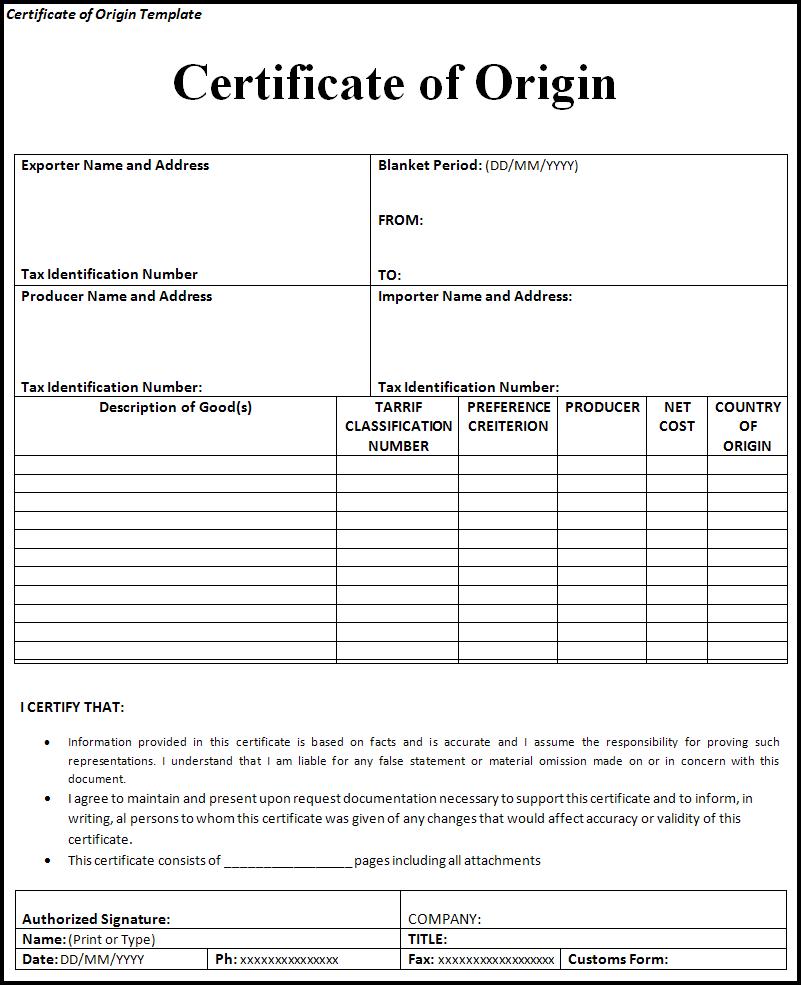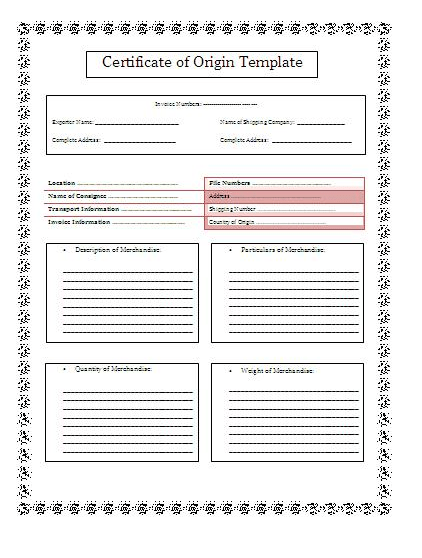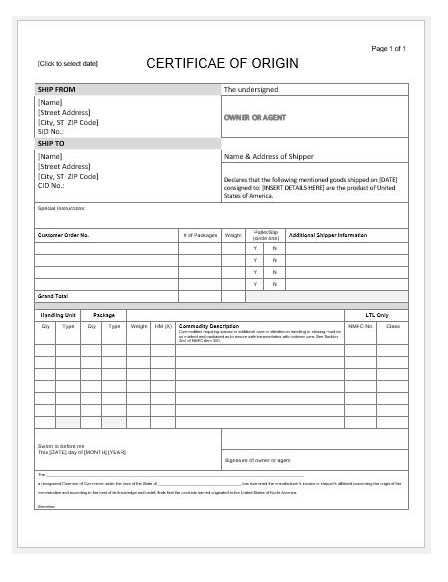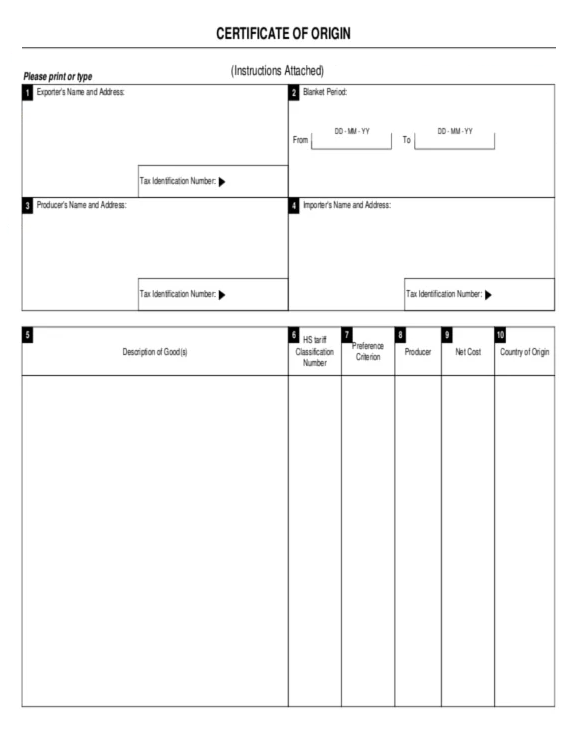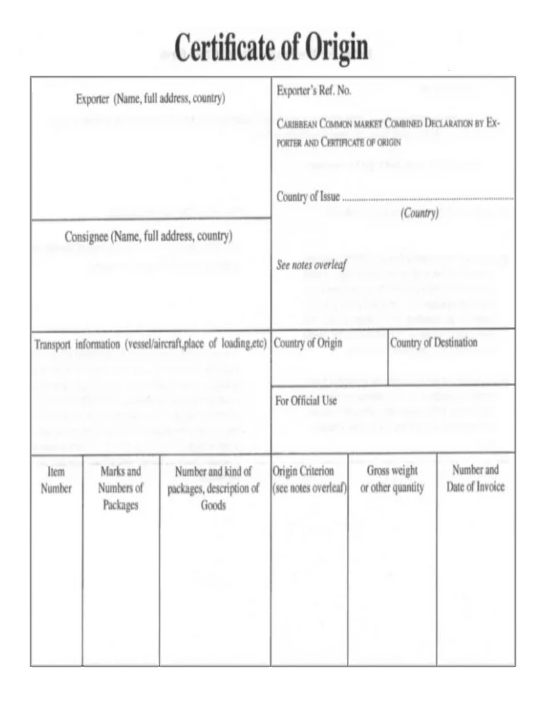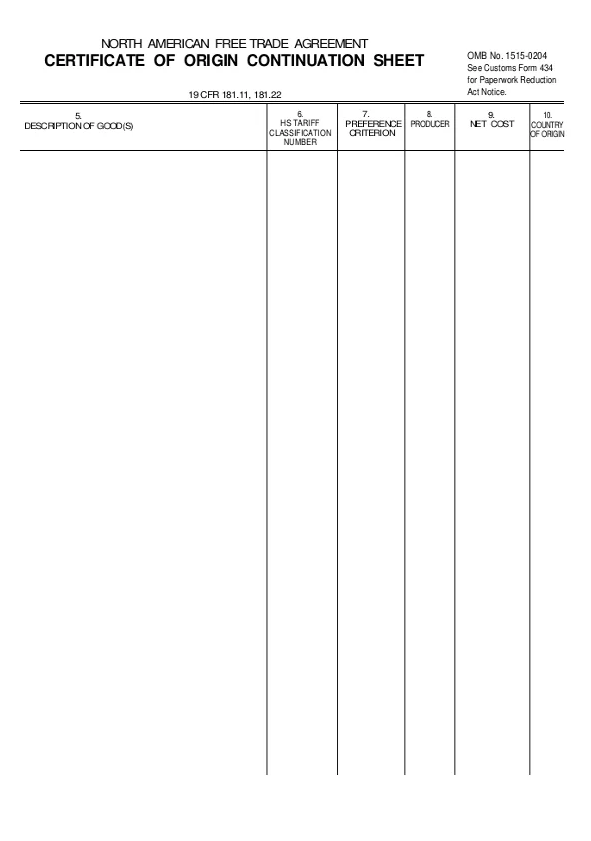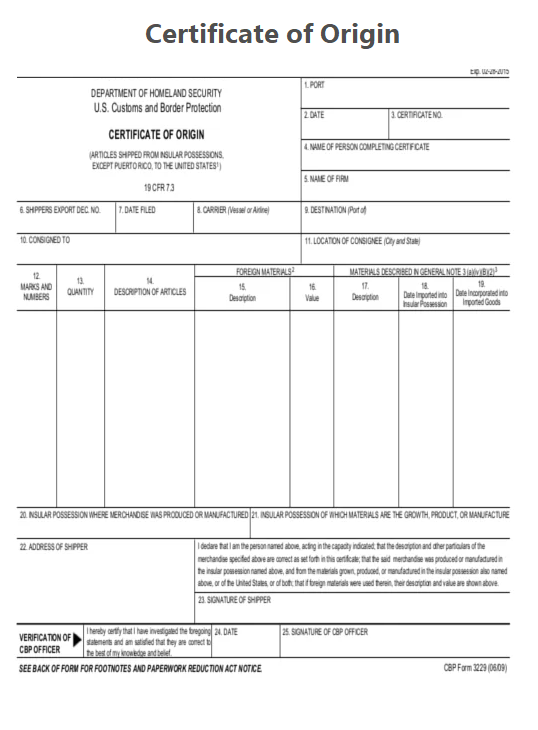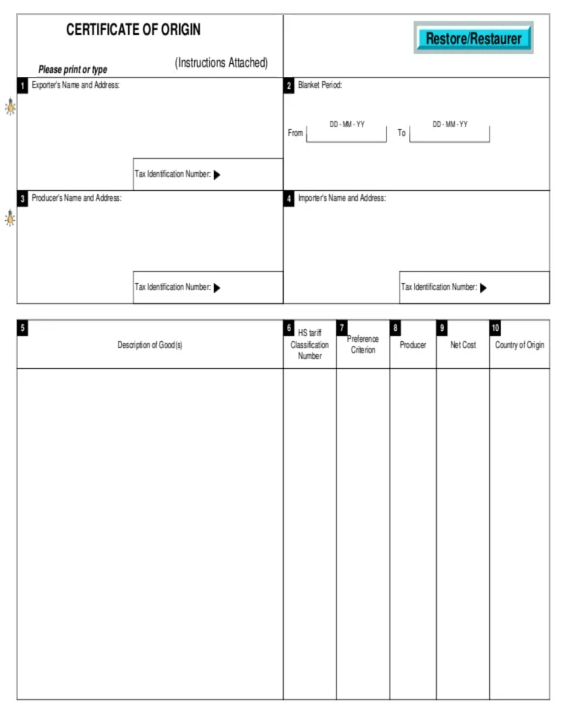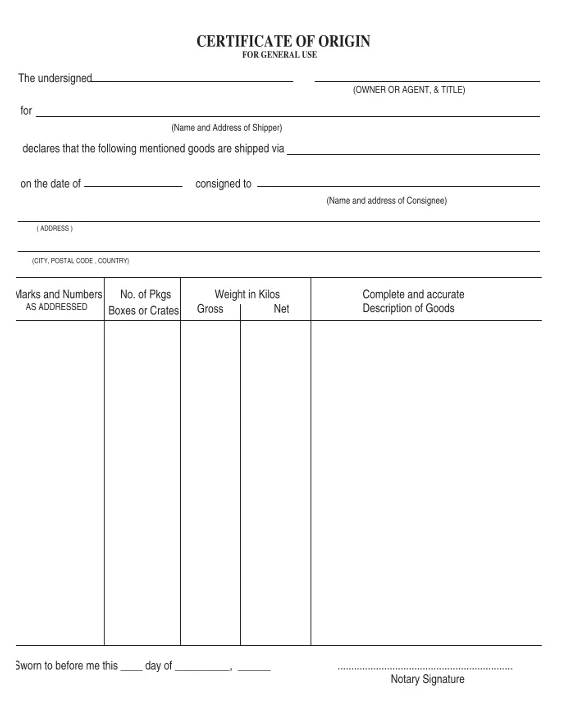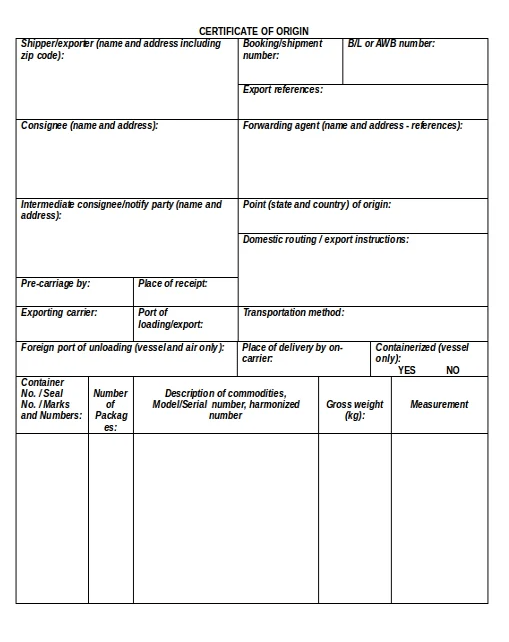Certificate of origin templates are part of business export documentation and are used to confirm the actual origin of goods or inventories. It includes information regarding the product’s destination and country of export and is required in a number of agreements before being accepted into another country. A certificate of origin can be requested by the customer, from anywhere in the world, to determine the origin of goods being imported or could be requested by the consignee for customs clearance. Moreover, it is often required by customs officers so that duty fees can be determined. It is often required as proof of whether the goods have been legally imported. The origin certificate template comes with the information about the country where the goods were made. If you haven’t this format or the one you have is not correctly completed, it will result in goods being held up by customs authorities, and could delay payment for your shipment.
Importance of Certificate of Origin:
A certificate of origin template is an important international trade document confirming that the goods in a particular shipment have been wholly obtained, produced, manufactured or processed in a particular country. It further elaborates on the permission status where a company can use its own manufacturing equipment. If a company can accept material from its own unit, then this process does not require any permission. Without this certificate, the export and import business wouldn’t run and couldn’t grow. The certificate of origin format is a professional format which is commonly issued by a trade promotion office. It is used between the members of the trading where special orders are granted for goods produced in certain countries. As far as it uses an electronically printed form which is completed by the export agency or exporter itself via certifying that this package of goods has been attesting that the goods available in particular shipment have been manufactured in a certain country.
Details of Certificate of Origin:
Perhaps the issuing body or exporter may develop a statement which refers to the name and other information of the country where the goods have been supplied or manufactured. The amount of data comprised by certificate of origin is; name of products, quantity of goods, exporter information, signature of the authority issuing this certificate, legal stamp, and even more. The certificate of origin mutually assists both the exporter and the buyer. For instance, from the point of view of the purchaser, the certificate of origin always acts as evidence. Whereas, by certificate, an exporter is all set to legally explain the terms of goods issued accordingly. At the same time, the certificate of origin also secures the exporter from the problem that could probably be faced during the process of export. Moreover, from all over the globe, each and every nation has their own chamber of commerce which issue certificates of origin. The authorities ask the exporter if he/she should have to pay the fee for a certificate of origin. Actually, here’s one more noticeable thing: the payment of certificates of origin always depends upon the date of origin.
